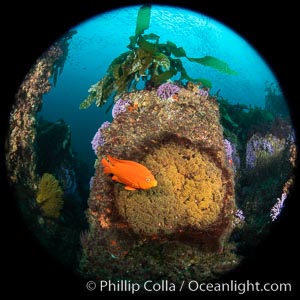
Garibaldi maintains a patch of orange algae (just in front of the fish) to entice a female to lay a clutch of eggs, Farnsworth Banks, Catalina Island.
Species: Garibaldi, Hypsypops rubicundus
Location: Catalina Island, California
Image ID: 37255
Species: Garibaldi, Hypsypops rubicundus
Location: Catalina Island, California
Image ID: 37255
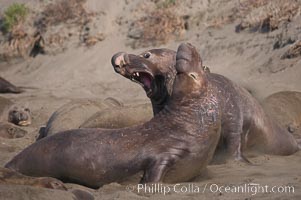
Male elephant seals (bulls) rear up on their foreflippers and fight for territory and harems of females. Bull elephant seals will haul out and fight from December through March, nearly fasting the entire time as they maintain their territory and harem. They bite and tear at each other on the neck and shoulders, drawing blood and creating scars on the tough hides. Sandy beach rookery, winter, Central California.
Species: Elephant seal, Mirounga angustirostris
Location: Piedras Blancas, San Simeon, California
Image ID: 15394
Species: Elephant seal, Mirounga angustirostris
Location: Piedras Blancas, San Simeon, California
Image ID: 15394
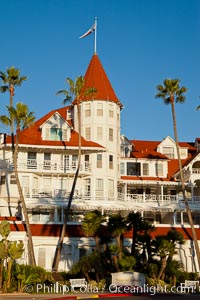
Hotel del Coronado, known affectionately as the Hotel Del. It was once the largest hotel in the world, and is one of the few remaining wooden Victorian beach resorts. It sits on the beach on Coronado Island, seen here with downtown San Diego in the distance. It is widely considered to be one of Americas most beautiful and classic hotels. Built in 1888, it was designated a National Historic Landmark in 1977.
Location: San Diego, California
Image ID: 27106
Location: San Diego, California
Image ID: 27106
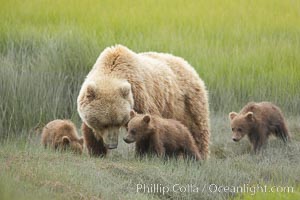
Brown bear female sow with spring cubs. These three cubs were born earlier in the spring and will remain with their mother for almost two years, relying on her completely for their survival.
Species: Brown bear, Ursus arctos
Location: Lake Clark National Park, Alaska
Image ID: 19181
Species: Brown bear, Ursus arctos
Location: Lake Clark National Park, Alaska
Image ID: 19181
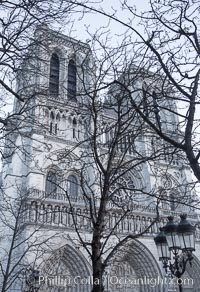
Notre Dame Cathedral, trees and streetlamp, west facade, Paris. Notre Dame de Paris ("Our Lady of Paris"), also known as Notre Dame Cathedral or simply Notre Dame, is a historic Roman Catholic Marian cathedral on the eastern half of the Ile de la Cite in the fourth arrondissement of Paris, France. Widely considered one of the finest examples of French Gothic architecture and among the largest and most well-known churches in the world ever built, Notre Dame is the cathedral of the Catholic Archdiocese of Paris.
Location: Notre Dame de Paris, France
Image ID: 28242
Location: Notre Dame de Paris, France
Image ID: 28242
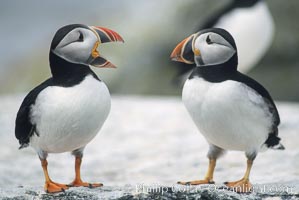
Atlantic puffin, mating coloration.
Species: Atlantic puffin, Fratercula arctica
Location: Machias Seal Island, Maine
Image ID: 03135
Species: Atlantic puffin, Fratercula arctica
Location: Machias Seal Island, Maine
Image ID: 03135
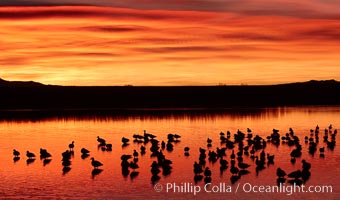
Snow geese rest on a still pond in rich orange and yellow sunrise light. These geese have spent their night's rest on the main empoundment and will leave around sunrise to feed in nearby corn fields.
Species: Snow goose, Chen caerulescens
Location: Bosque del Apache National Wildlife Refuge, Socorro, New Mexico
Image ID: 21802
Species: Snow goose, Chen caerulescens
Location: Bosque del Apache National Wildlife Refuge, Socorro, New Mexico
Image ID: 21802
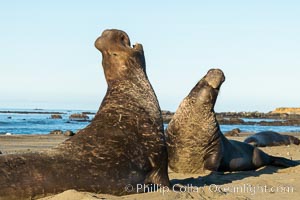
Male elephant seals (bulls) rear up on their foreflippers and fight for territory and harems of females. Bull elephant seals will haul out and fight from December through March, nearly fasting the entire time as they maintain their territory and harem. They bite and tear at each other on the neck and shoulders, drawing blood and creating scars on the tough hides. Sandy beach rookery, winter, Central California.
Species: Elephant seal, Mirounga angustirostris
Location: Piedras Blancas, San Simeon, California
Image ID: 35150
Species: Elephant seal, Mirounga angustirostris
Location: Piedras Blancas, San Simeon, California
Image ID: 35150
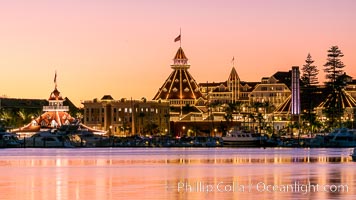
Hotel del Coronado with holiday Christmas night lights, known affectionately as the Hotel Del. It was once the largest hotel in the world, and is one of the few remaining wooden Victorian beach resorts. The Hotel Del is widely considered to be one of Americas most beautiful and classic hotels. Built in 1888, it was designated a National Historic Landmark in 1977.
Location: Coronado, California
Image ID: 37489
Location: Coronado, California
Image ID: 37489
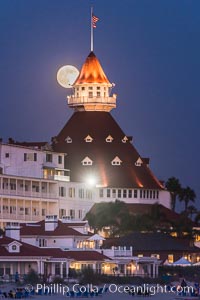
Full Moon Rising over Hotel del Coronado, known affectionately as the Hotel Del. It was once the largest hotel in the world, and is one of the few remaining wooden Victorian beach resorts. It sits on the beach on Coronado Island, seen here with downtown San Diego in the distance. It is widely considered to be one of Americas most beautiful and classic hotels. Built in 1888, it was designated a National Historic Landmark in 1977.
Location: San Diego, California
Image ID: 29421
Location: San Diego, California
Image ID: 29421
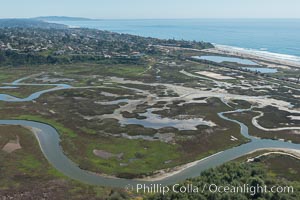
Aerial Photo of San Elijo Lagoon. San Elijo Lagoon Ecological Reserve is one of the largest remaining coastal wetlands in San Diego County, California, on the border of Encinitas, Solana Beach and Rancho Santa Fe.
Location: Encinitas, California
Image ID: 30592
Location: Encinitas, California
Image ID: 30592
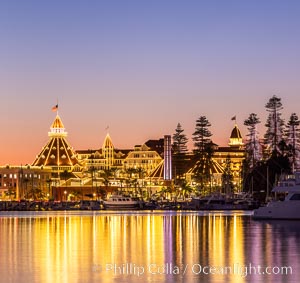
Hotel del Coronado with holiday Christmas night lights, known affectionately as the Hotel Del. It was once the largest hotel in the world, and is one of the few remaining wooden Victorian beach resorts. The Hotel Del is widely considered to be one of Americas most beautiful and classic hotels. Built in 1888, it was designated a National Historic Landmark in 1977.
Location: Coronado, California
Image ID: 37490
Location: Coronado, California
Image ID: 37490
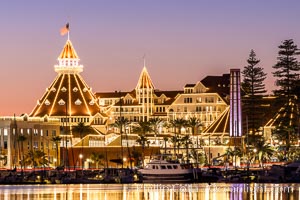
Hotel del Coronado with holiday Christmas night lights, known affectionately as the Hotel Del. It was once the largest hotel in the world, and is one of the few remaining wooden Victorian beach resorts. The Hotel Del is widely considered to be one of Americas most beautiful and classic hotels. Built in 1888, it was designated a National Historic Landmark in 1977.
Location: Coronado, California
Image ID: 37491
Location: Coronado, California
Image ID: 37491
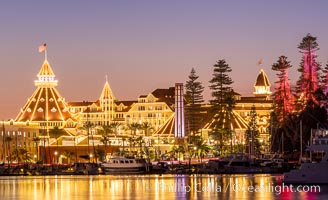
Hotel del Coronado with holiday Christmas night lights, known affectionately as the Hotel Del. It was once the largest hotel in the world, and is one of the few remaining wooden Victorian beach resorts. The Hotel Del is widely considered to be one of Americas most beautiful and classic hotels. Built in 1888, it was designated a National Historic Landmark in 1977.
Location: Coronado, California
Image ID: 37492
Location: Coronado, California
Image ID: 37492
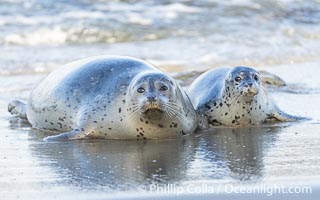
Pacific Harbor Seal Mother and Pup Emerge from the Ocean, they will remain close for four to six weeks until the pup is weaned from its mother's milk.
Species: Pacific harbor seal, Phoca vitulina richardsi
Location: La Jolla, California
Image ID: 39117
Species: Pacific harbor seal, Phoca vitulina richardsi
Location: La Jolla, California
Image ID: 39117
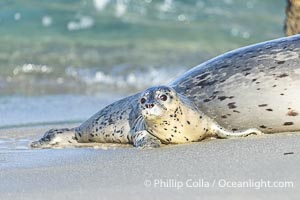
Pacific Harbor Seal Mother and Pup on the Beach in San Diego. They will remain close for four to six weeks until the pup is weaned from its mother's milk.
Species: Pacific Harbor Seal, Phoca vitulina richardsi
Location: La Jolla, California
Image ID: 40214
Species: Pacific Harbor Seal, Phoca vitulina richardsi
Location: La Jolla, California
Image ID: 40214
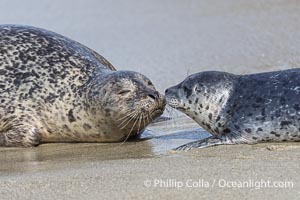
Pacific Harbor Seal Mother and Pup on the Beach in San Diego. They will remain close for four to six weeks until the pup is weaned from its mother's milk.
Species: Pacific Harbor Seal, Phoca vitulina richardsi
Location: La Jolla, California
Image ID: 40224
Species: Pacific Harbor Seal, Phoca vitulina richardsi
Location: La Jolla, California
Image ID: 40224
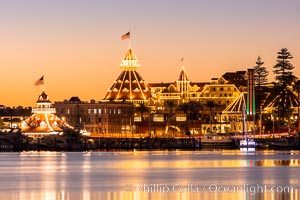
Hotel del Coronado with holiday Christmas night lights, known affectionately as the Hotel Del. It was once the largest hotel in the world, and is one of the few remaining wooden Victorian beach resorts. The Hotel Del is widely considered to be one of Americas most beautiful and classic hotels. Built in 1888, it was designated a National Historic Landmark in 1977.
Image ID: 36618
Panorama dimensions: 5595 x 8392
Image ID: 36618
Panorama dimensions: 5595 x 8392
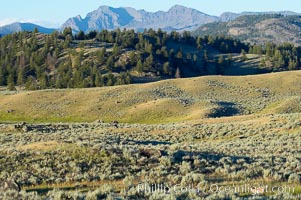
Pronghorn antelope, Lamar Valley. The Pronghorn is the fastest North American land animal, capable of reaching speeds of up to 60 miles per hour. The pronghorns speed is its main defense against predators.
Species: Pronghorn antelope, Antilocapra americana
Location: Lamar Valley, Yellowstone National Park, Wyoming
Image ID: 13080
Species: Pronghorn antelope, Antilocapra americana
Location: Lamar Valley, Yellowstone National Park, Wyoming
Image ID: 13080
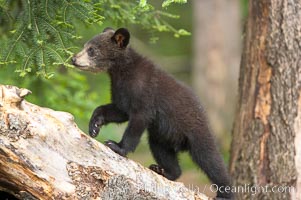
Black bear cub. Black bear cubs are typically born in January or February, weighing less than one pound at birth. Cubs are weaned between July and September and remain with their mother until the next winter.
Species: American black bear, Ursus americanus
Location: Orr, Minnesota
Image ID: 18752
Species: American black bear, Ursus americanus
Location: Orr, Minnesota
Image ID: 18752
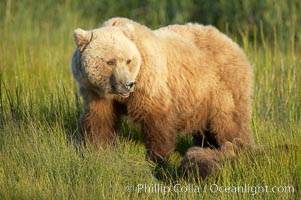
Brown bear female sow in sedge meadow, with her three spring cubs hidden by the deep grass next to her. These cubs were born earlier in the spring and will remain with their mother for almost two years, relying on her completely for their survival.
Species: Brown bear, Ursus arctos
Location: Lake Clark National Park, Alaska
Image ID: 19186
Species: Brown bear, Ursus arctos
Location: Lake Clark National Park, Alaska
Image ID: 19186
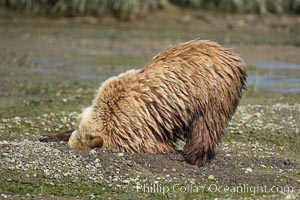
Brown bear digs in a nearly dry river bed for remains of salmon.
Species: Brown bear, Ursus arctos
Location: Lake Clark National Park, Alaska
Image ID: 19192
Species: Brown bear, Ursus arctos
Location: Lake Clark National Park, Alaska
Image ID: 19192
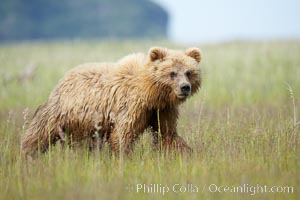
Coastal brown bear cub, one and a half years old, near Johnson River. This cub will remain with its mother for about another six months, and will be on its own next year.
Species: Brown bear, Ursus arctos
Location: Johnson River, Lake Clark National Park, Alaska
Image ID: 19198
Species: Brown bear, Ursus arctos
Location: Johnson River, Lake Clark National Park, Alaska
Image ID: 19198
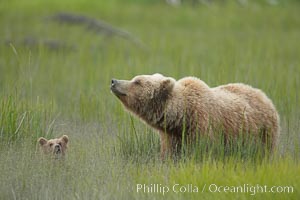
Brown bear female sow with spring cubs. These three cubs were born earlier in the spring and will remain with their mother for almost two years, relying on her completely for their survival.
Species: Brown bear, Ursus arctos
Location: Lake Clark National Park, Alaska
Image ID: 19205
Species: Brown bear, Ursus arctos
Location: Lake Clark National Park, Alaska
Image ID: 19205
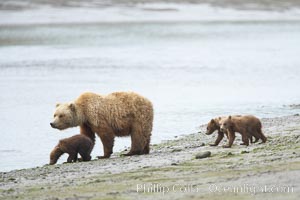
Brown bear female sow with spring cubs. These three cubs were born earlier in the spring and will remain with their mother for almost two years, relying on her completely for their survival.
Species: Brown bear, Ursus arctos
Location: Lake Clark National Park, Alaska
Image ID: 19206
Species: Brown bear, Ursus arctos
Location: Lake Clark National Park, Alaska
Image ID: 19206
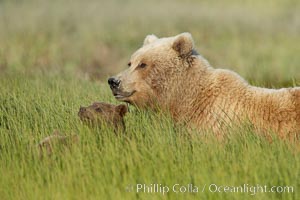
Brown bear female sow with spring cubs. These cubs were born earlier in the spring and will remain with their mother for almost two years, relying on her completely for their survival.
Species: Brown bear, Ursus arctos
Location: Lake Clark National Park, Alaska
Image ID: 19211
Species: Brown bear, Ursus arctos
Location: Lake Clark National Park, Alaska
Image ID: 19211
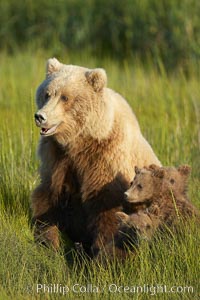
Brown bear female sow in sedge meadow, with her three spring cubs hidden by the deep grass next to her. These cubs were born earlier in the spring and will remain with their mother for almost two years, relying on her completely for their survival.
Species: Brown bear, Ursus arctos
Location: Lake Clark National Park, Alaska
Image ID: 19219
Species: Brown bear, Ursus arctos
Location: Lake Clark National Park, Alaska
Image ID: 19219
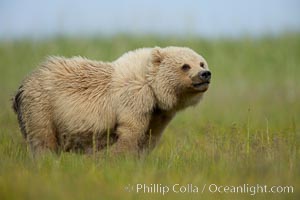
Coastal brown bear cub, one and a half years old, near Johnson River. This cub will remain with its mother for about another six months, and will be on its own next year.
Species: Brown bear, Ursus arctos
Location: Johnson River, Lake Clark National Park, Alaska
Image ID: 19247
Species: Brown bear, Ursus arctos
Location: Johnson River, Lake Clark National Park, Alaska
Image ID: 19247
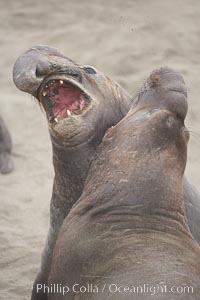
Male elephant seals (bulls) rear up on their foreflippers and fight for territory and harems of females. Bull elephant seals will haul out and fight from December through March, nearly fasting the entire time as they maintain their territory and harem. They bite and tear at each other on the neck and shoulders, drawing blood and creating scars on the tough hides.
Species: Elephant seal, Mirounga angustirostris
Location: Piedras Blancas, San Simeon, California
Image ID: 20371
Species: Elephant seal, Mirounga angustirostris
Location: Piedras Blancas, San Simeon, California
Image ID: 20371
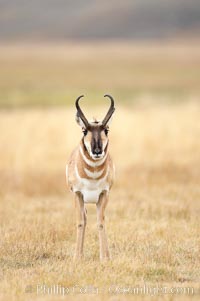
The Pronghorn antelope is the fastest North American land animal, capable of reaching speeds of up to 60 miles per hour. The pronghorns speed is its main defense against predators.
Species: Pronghorn antelope, Antilocapra americana
Location: Lamar Valley, Yellowstone National Park, Wyoming
Image ID: 19626
Species: Pronghorn antelope, Antilocapra americana
Location: Lamar Valley, Yellowstone National Park, Wyoming
Image ID: 19626